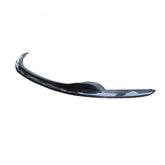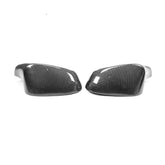Tyres are the unsung heroes of your vehicle's safety and performance. They're the only point of contact with the road, playing a crucial role in how your car accelerates, brakes, and corners. However, tyres don't last forever. Their lifespan can vary significantly based on a myriad of factors, from driving habits to maintenance routines. Here are expert tips to help you maximize the mileage and extend the lifespan of your tyres, ensuring a safer, more economical driving experience.

1. Regularly Check Tyre Pressure
Underinflated or overinflated tyres can lead to uneven wear, reduced traction, and even blowouts. Check your tyre pressure monthly and before long trips, adjusting as necessary to match the manufacturer’s recommended levels. Remember, tyre pressure can fluctuate with temperature changes, so it's crucial to maintain vigilance year-round.
2. Rotate Your Tyres Regularly
Rotating your tyres every 5,000 to 8,000 miles ensures even wear and extends their useful life. Different vehicles may wear tyres at different rates, especially front-wheel-drive models where the front tyres bear more of the vehicle's weight and do most of the work while turning.
3. Align and Balance Your Wheels
Misaligned wheels can cause rapid and irregular tyre wear, while unbalanced wheels can lead to vibration, premature tyre wear, and strain on your vehicle's suspension. Having your wheels aligned and balanced by a professional every 6,000 miles or whenever you notice uneven wear patterns can prevent these issues.
4. Adopt Smooth Driving Habits
Aggressive driving – including speeding, rapid acceleration, and hard braking – can significantly decrease tyre life. Adopting smoother driving habits not only extends the lifespan of your tyres but also improves fuel efficiency and reduces the risk of accidents.
5. Avoid Overloading Your Vehicle
Exceeding your vehicle's maximum load capacity puts additional stress on your tyres, leading to increased heat and, potentially, tyre failure. Always adhere to the recommended load capacity found in your vehicle’s owner manual.
6. Inspect Tyres for Damage and Wear
Regularly inspect your tyres for signs of damage, such as cuts, cracks, bulges, or objects embedded in the tread. Also, be mindful of the tread depth. Most regions have legal requirements for minimum tread depth; however, replacing tyres before they reach the absolute minimum can greatly improve safety, especially in wet conditions.
7. Avoid Potholes and Rough Roads When Possible
Impact with potholes, curbs, and other road hazards can cause immediate tyre damage or create weak spots that lead to future failures. While it's not always possible to avoid rough roads, driving carefully and at reduced speeds in such conditions can minimize damage.
8. Invest in Quality Tyres
While budget is always a consideration, investing in quality tyres from reputable brands often results in longer tyre life, better fuel efficiency, and improved safety. Quality tyres may have a higher upfront cost, but their longer lifespan and reliability can lead to savings over time.
Conclusion: A Commitment to Tyre Care
The lifespan of your tyres is directly influenced by how well you maintain them and your driving habits. By following these tips, you can ensure your tyres last as long as possible, providing you with a safer, more enjoyable driving experience. Remember, taking care of your tyres not only saves you money in the long run but also contributes to your vehicle’s performance and your safety on the road.










